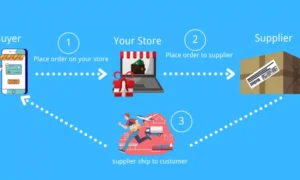The era when sending important documents required time wasted in post office queues is long gone. Modern technology has now made it possible to send your documents online in a few minutes without having to leave your home or office. Regardless of whether you are delivering legal agreements, research documentation, or other personal forms, online postage services can make that process a lot faster, secure, and stress-free. The following is an easy step-by-step procedure to move you through mailing your documents online and never bother setting up the paperwork in the mailing office.
Step 1: Choose a Reliable Online Mailing Service
Go through the first stage of selection of a reliable platform that would enable you to send, receive, and monitor your documents. Such services offer a wide range of popular services such as eFax, DocuPost, and the offerings of USPS Click-N-Send and other secure file transfer services. Search for encryption, tracking, and digital signatures to assure security and convenience.
Step 2: Prepare Your Documents
Check that your documents are formatted the right way before you send. The most widely accepted file format is the PDF, as the format allows formatting control and is convenient to password-protect. Organize physical documents. Copies of documents should be sorted and scanned with a smartphone imprinting app or a scanner in PDF or image format.
Step 3: Upload the File
Now, when all your papers are prepared, you can sign in to the selected platform and upload your file. This process is only very easy with most services having drag-and-drop features. Here, you can also customize such options as:
- Password security of confidential documents
- Watermarking / DRM to prevent editing
- Different receivers when sending to multiple people
Step 4: Add Recipient Information
Insert the recipient email or Web delivery information. Refer to this information twice, because even the slightest mistake could make your document go to the wrong addressee. You can also keep your favorite contacts in a number of services, which saves your efforts in the future should you need to let someone see some documents regularly.
Step 5: Sign Digitally (If Required)
Should your document need a signature, then you have the option to add a legally binding digital signature prior to sending. Other tools, such as DocuSign and Adobe Sign, can be used with most online mailing programs. A digital signature will make your document tamper-proof and legally qualified.
Step 6: Send and Confirm Delivery
After you have everything ready, press the send button. Most Internet-based mailing services give tracking and confirmation receipts. You will get a message after the person you sent the file to opens or downloads the file. Such a tracking facility will provide you with assurance, particularly regarding important documents.
Step 7: Store a Copy Safely
Lastly, copy and store a copy of the sent document in an online backup or an external storage. Records of your mailing history are also kept in many platforms, useful to refer to in the future or during audits.
Conclusion
The facilitated mail documents online are faster, convenient, and safer compared to making physical trips to the post office. By obeying these few measures- choosing the right service, preparing your files, uploading, and sending- you can rest assured that the documents get to their destination safely and within a short period. Convenience is not the only value to online mailing; the issue is also that you can be sure that your documents arrive on time in the present time; you do not need to wait in queues in postal offices.


































